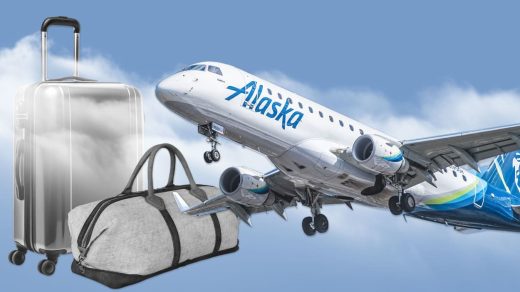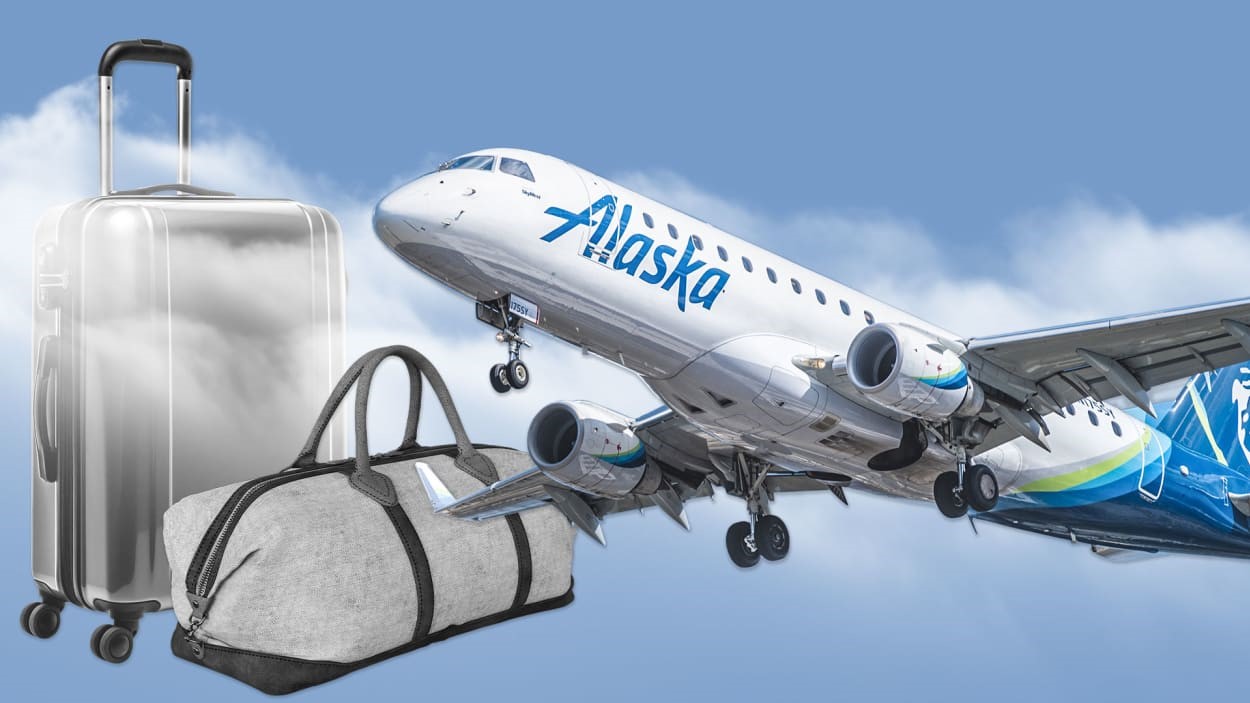Alaska Airlines has a $2.5 billion plan to make holiday travel less of a nightmare
By Sean Cudahy
Think about everything that happens as you arrive at an airport: the sensory overload of honking horns and police telling drivers to “keep moving” on the Departures level. Inside the ticketing area, you find anxious, luggage-toting travelers trying to make their way to the right line.
Checking a bag? Head to a kiosk and enter your record locator.
“Is this your trip?” the kiosk asks. (Yes.)
“What do you need to do? Print a boarding pass? Check a bag? Change a seat? Purchase a mileage multiplier for $12.99? Hear about our credit cards?” (Yes, yes, maybe, no, no.)
Minutes go by as you click and swipe.
Then, it’s on to the bag drop line. Wait your turn, show your ID, weigh the bag, get your bag tag slip, and, finally, make your way to security.
A lot happens before you even make your way to the TSA line.
With the TSA expecting its biggest Thanksgiving crowds ever to kick off the hectic holiday travel season, America’s fifth largest airline is placing a multibillion-dollar bet that travelers are ready for a change that could potentially speed up at least one part of the travel process.
Removing check-in kiosks
Once the first U.S. airline to roll out those check-in kiosks that are commonplace today at airports around the world, Alaska Airlines is now in the process of removing the devices.
It’s one step in a $2.5 billion effort to get travelers through ticketing and to security in five minutes or less, according to Charu Jain, Alaska’s senior vice president of innovation and merchandising.
“Our research showed that [pre-security is] a point of friction, and a point of anxiety for our guests,” Jain said, speaking at the Nov. 1 Skift Aviation Forum in Fort Worth, Texas. “Nobody wants to hang around the lobby. They all want to get through the lobby to security.”
An airport lobby overhaul
As part of this ticketing area transformation, Alaska is honing in on the one thing, it says, that customers physically must do at the front of the airport: drop off a bag.
With that in mind, Alaska decided to start replacing its decades-old kiosks with simpler iPad-based stations that do just one thing: print bag tags.
Guests scan their boarding pass, and the bag tag comes out. That’s it.
Customers spend an average of 45 seconds at the new devices, Alaska says—that’s down from an average two to three minutes at the older kiosks.
Of course, with simpler devices on-site, something has to give: Alaska is more actively pushing customers to check in and download (or print) their boarding pass before arriving at the airport. And it’s working, that airline says.
So far, the new iPad stations are in place at 90% of airports Alaska serves, a company spokesperson told Fast Company. At those airports, 80% of guests are arriving at the airport already checked in—up from 60% one year ago. Around 90% of guests at those airports are using mobile boarding passes—also up from 60% a year ago.
Bigger changes in the works
Of course, printing a bag tag is only one stage of the checked luggage process.
Alaska is also planning a much larger airport lobby transformation in its hubs of Seattle, Portland, San Francisco, Los Angeles, and Anchorage.
Over the next three years, the airline will add automated bag drop stations at those airports, which will scan a traveler’s face and government-issued identification, compare the images, and allow the traveler to drop a bag and be on their way
The practice has been used more commonly overseas.
Combined with additional “Mobile Verify” technology that allows Alaska to remotely check passports and other documents, the investments are designed to keep more travelers from having to ever visit a counter or an agent.
An age of self service
These steps by Alaska are in line with moves other U.S. carriers are making to improve passenger-facing apps and technology, often putting more self service tools in the hands of customers.
Many airlines now allow travelers to instantly rebook themselves on a new flight with a few taps in the app when cancellations or significant delays happen.
Southwest Airlines just joined American, Delta, and United as the fourth U.S. carrier to offer mobile bag-tracking. (Alaska is currently testing its own such tool.)
Some experts, though, are more skeptical of these changes, viewing them as a sort of Trojan horse for diminished services.
“The airline industry’s move to outsource work to customers and push self-service is relentless,” says Bob Mann, a longtime airline executive and current industry analyst.
Alaska’s shift to iPad bag tag stations, he argues, is more about managing the airline’s costs than improving the customer experience.
For its part, Alaska says its customer surveys suggest self-service options are a top priority for customers. Plus, these new processes, Jain says, will free up lobby agents to roam more freely assisting passengers, such as the airline’s increasingly rare traveler that doesn’t arrive already checked in.
“They’re available to help the guest wherever they are,” Jain said. “I think it’s very important for our agents to spend time with people that need more help.”
(16)



